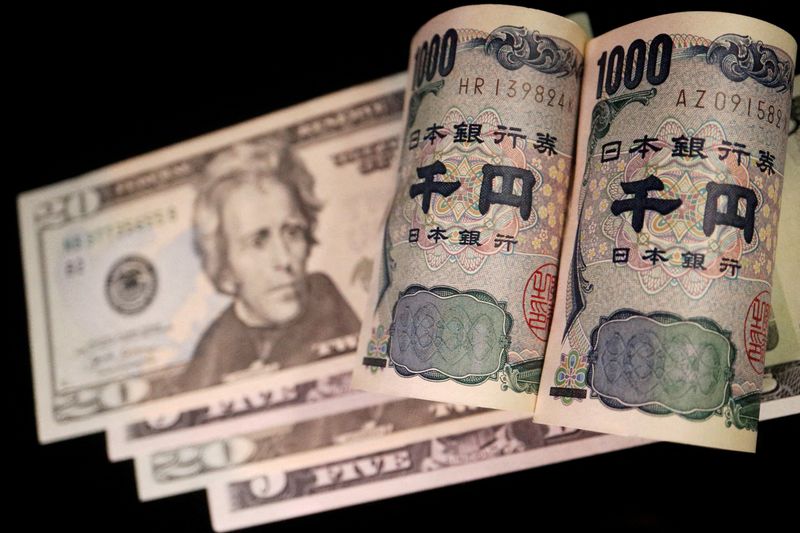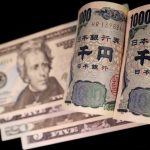SINGAPORE/LONDON (Reuters) -The yen dropped to its lowest level since 1990 on Wednesday, into the zone that triggered intervention by Japanese authorities in 2022, prompting the finance minister to warn Japan would take “decisive steps” against excessive currency moves.
The dollar briefly rose to 151.97 yen in the Asia session, its strongest against the yen since mid-1990, but was last down 0.12% at 151.42.
Japanese authorities stepped in to defend the yen at 151.94 in 2022 and finance minister Shunichi Suzuki on Wednesday used the same words that preceded that intervention, warning Japan would take “decisive steps” against excessive currency moves.
The finance ministry said on Wednesday that it will hold talks with the Bank of Japan and the Financial Services Agency at 0915 GMT on Wednesday and will brief reporters afterwards. The announcement boosted the yen slightly.
The yen has slumped more than 7% this year, driven by the yawning gap between U.S. and Japanese bond yields, which the Bank of Japan’s small interest rate hike last week did little to change.
“The market is very sensitive to the 152 area,” said National Australia Bank (OTC:NABZY) strategist Rodrigo Catril. “If we were to break that level then recent history would suggest that intervention would be much more likely.”
Meanwhile, the dollar is on course for quarterly gains after investors pared back their expectations for big interest rate cuts in the face of strong economic data and reticence from central bankers.
The dollar index was last roughly flat at 104.27, up around 3% so far in 2024.
KING DOLLAR
The market’s main focus this week is on U.S. core inflation figures due on Good Friday, though already a bigger-than-expected jump in U.S. durable goods orders on Wednesday boosted the dollar somewhat, weighing further on the yen.
Guy Miller, chief market strategist at Zurich Insurance group, said currencies were suffering under the weight of a strong U.S. currency, including China’s yuan, which finished the domestic session at its weakest close since Nov. 2023 at 7.2284.
The euro (EUR=EBS) showed little reaction to Spanish inflation data rising slightly less than expected in March and was flat on the day at $1.0835. Sterling was steady at $1.2633.
“The US economy has done much better than most had expected, particularly compared to other parts of the world,” Miller said.
“Investors who were perhaps short (betting against) the USD have probably unwound some of these positions… helping to support the dollar in recent weeks.”

The dollar strengthened slightly against Sweden’s crown after the Swedish central bank held interest rates and hinted at rate cuts in the coming months, but then gave up its gains to stand flat at 10.59 crowns.
The Swiss franc traded around its lowest since November at 0.9039 francs to the dollar, although was flat on the day. The Swiss currency is still reeling from a surprise rate cut in Switzerland last week, and is down around 7% this year.
To read the full article, Click Here

